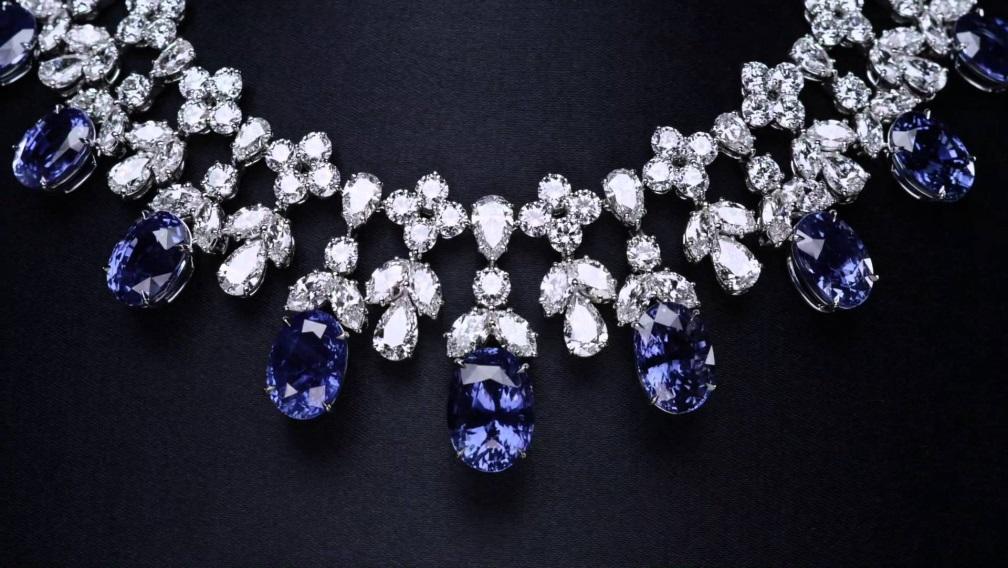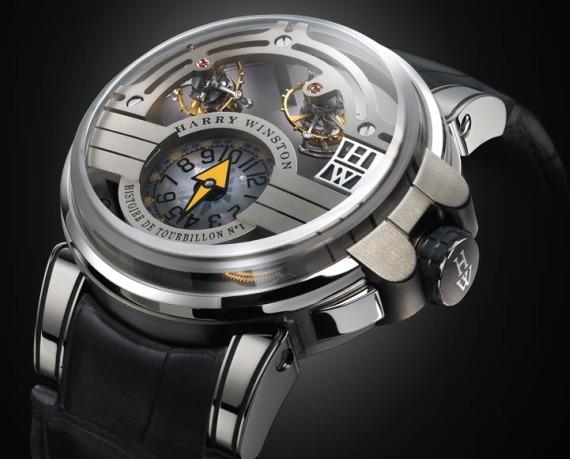Background Information
Harry Winston is a leading brand that is known to produce and deliver quality watches and jewelry to its customers (“Harry Winston” par. 2). The brand was founded on the design philosophy of Mr. Harry Winston. Harry Winston Diamond Corporation was founded in the year 1932 and is headquartered in New York. The brand has been setting the pace in the industry. The company “designs, purchases, and markets jewel-encrusted bracelets, rings, earrings, necklaces, high-end timepieces, customized wedding jewelry” (“Harry Winston” par. 4).
Harry Winston (also called the House of Harry Winston) has for decades supported its tradition of rarity, quality, and creativity. The company has retail salons in different cities across the globe such as Geneva, New York, Paris, London, Hong Kong, Shanghai, and Tokyo. The brand is revered by many enthusiasts across the globe. A detailed analysis of Harry Winston’s evolution and development can make it easier for more people to understand its core business values and future strategic direction.
Mission and Values
Harry Winston Diamond Corporation has a powerful brand mission statement that supports its superior brands and business goals. The mission statement is to “celebrate the meaningful moments of every client’s life” (Weisberger 17). As well, the brand has a unique mission statement for its retail segment. The mission statement is to “create financial value for every stakeholder by crafting goodwill for both clients and the society” (“Harry Winston” par. 6). These missions are critical towards making Harry Winston one of the leading manufacturers of diamond jewelry and timepieces. Such exclusive products are intended to support the needs of every global consumer.
History and Legacy
Weisberger believes that Harry Winston is a brand that has evolved over the years to become a source of admiration for many global customers (29). The founder of Harry Winston Diamond Corporation, Mr. Harry Winston, was a dedicated gemologist and intuitive businessperson (Weisberger 38). These attributes played a significant role in determining the business aspects of Harry Winston Diamond Corporation.
The company was “started in 1932 thus marking the beginning of a remarkable legacy” (“Harry Winston” par. 4). In 1935, Harry Winston purchased the Jonker. This was an uncut diamond stone weighing 726 carats. Mr. Winston continued to purchase historic stones, uncut diamonds, and jewels. The diamond enthusiast continued to open new stores and purchased numerous gemstones. He later died in 1978 aged 82 years.
The firm continued to open new stores in different countries such as Switzerland and Japan. In 1989, Harry Winston “introduced a new collection of timepieces thus joining the club of fine watch-making firms” (Weisberger 17). The corporation introduced the famous Opus Series in the year 2001. The firm became the first in the world to manufacture, design, and market timepieces crafted in Zalium (Weisberger 65). Zalium is an innovative alloy containing zirconium. In 2011, Harry Winston introduced handcrafted high-end jewelry collections known as Ultimate Adornments. This jewelry was crafted from rare compounds such as platinum and diamonds (Weisberger 78).


The products and watches produced by Harry Winston Diamond Corporation continue to support the journey of culture, tradition, and heritage (“Harry Winston” par. 5). The firm has acquired many gemstones and diamonds. These gemstones have continued to exemplify the values and legacies established by Mr. Harry Winston. The firm is expected to continue producing exemplary watches and jewelry that can support its long tradition of quality and heritage.
Core Competencies
Harry Winston has remained a powerful brand in the global jewelry industry. This is the case because the company works hard to develop and sustain a number of core competencies. The first core aspect of the brand is founded on the superiority and image of its diamonds. Such diamonds “portray the image of a global style that meets the needs of every potential client” (Weisberger 82). As well, the brand is characterized by unrivaled craftsmanship. This approach makes it easier for the firm to design powerful products and jewelry that can deliver exclusive designs (Weisberger 82).
The company’s presence in different countries makes it competitive. The major regions targeted by the brand include Europe, the Far East, and North America. As a result, Harry Winston supports the needs of more consumers in these regions while at the same time remaining competitive. Harry Winston’s concept of philanthropy differentiates its business model from that of every immediate competitor. The philanthropic activities are undertaken by the firm always attract more consumers from different parts of the world (“The Trouble with Harry Winston” par. 9). The uniqueness of the company’s brands is something that supports its business goals. The products are also marketed in a professional manner thus adding value to the targeted stakeholders.
Competitors
Competition remains a major challenge for many companies in the jewelry and luxury watch industry. The company faces competition from some leading designers and marketers of consummate products such as Tiffany & Company. The other leading competitors in the industry include “Compagnie Financiere Richemont, Lvmh Moet Hennessy Louis Vuitton, Gitanjali, Van Clef and Arpels, Rolex, and Gitanjali” (Weisberger 65). Most of the competitors have developed sustainable business models thus marketing their products to more customers.
Target Customers
Weisberger believes strongly that Harry Winston is not “a common brand for every person who wants to own a necklace or a timepiece” (29). For very many decades, the Harry Winston brand has continued to target rich members of society. This fact explains why the company is yet to invest in different low-income societies and nations. Some of the favorite target customers include “domestic dowagers, grandees, queens, tycoons, and foreign millionaires” (“The Trouble with Harry Winston” par. 4).
Experts indicate clearly that Harry Winston has always been keen to select the right customers. The company has always favored specific rich individuals. This uniqueness has defined the company’s business model for the past nine decades. The company has also been known to target elite clientele (Weisberger 48). In summary, individuals who support the brand include “wealthy potentates, industrialists, prominent persons, kings, presidents, prominent royal families, and celebrities” (“The Trouble with Harry Winston” par. 9).
Current Business Practices and Challenges
Some leaders at the company have argued that the current business strategy is unsustainable. Although the brand is admired by the rich around the globe, new efforts have been outlined in an attempt to address the question of competition. For instance, the firm chose to slash its prices in an attempt to make its products affordable to different global customers (“The Trouble with Harry Winston” par. 2). However, the movie failed to deliver significant results thus forcing the company to identify new approaches. The ultimate goal has been to add value to targeted customers.
Competition has also remained extremely high in the jewelry industry. Although Harry Winston is characterized by numerous core competencies and competitive advantages, smaller companies have continued to take the credit (Verma 197). The other major challenge making it hard for the firm to achieve its potentials is its limited presence in different parts of the globe. The major competitors such as Tiffany & Company and Beculatti operate in many countries thus supporting their business goals (“The Trouble with Harry Winston” par. 7). In order to deal with the challenge, Harry Winston must outline new initiatives that can target more potential consumers in different parts of the world.
The industry is also facing the threat of new regulations and global requirements. The presence of stringent implementation structures continues to affect the firm’s business goals. New laws will be expected in the future thus affecting its sustainability. The “risks arising from the use of the US dollar to sell and purchase diamonds presents a currency risk” (“The Trouble with Harry Winston” par. 9). This issue is currently affecting the firm’s competitiveness and performance in the industry.
Strategic Direction for the Future
Harry Winston has managed to achieve numerous goals within the past eight decades. The firm has evolved from a small company to a giant multinational with a presence in different parts of the globe. The existence of numerous challenges and the increasing level of competition has compelled the management to outline new strategic directions that can deliver tangible results. The ultimate goal is to develop superior business plans and strategies that have the potential to address the problem of competition (“The Trouble with Harry Winston” par. 6). Harry Winston focuses on existing opportunities and threats in order to develop a powerful business model. The targeted model should be able to deliver positive results.
The company’s strategic direction for the future is characterized by numerous expansion processes. This move has been supported because the number of high-income populations has increased significantly within the past two decades. More people are also embracing the use of luxury goods and jewelry. Tourism has also encouraged more people to travel widely across the globe (Verma 63). The firm innovates and produces quality products that can address the needs of the targeted customers.
The company has also been focusing on new initiatives in order to increase its competitiveness. For instance, Harry Winston is planning to produce more compact products and collections that can transform the experience of every customer (Weisberger 89). The company’s research and development (R&D) department has introduced new designs that can fulfill the needs of different customer segments. The firm has also been using its “scalable manufacturing capacity to advance gross margins” (Verma 102).
Recommendations
Experts have presented numerous brand opportunities and initiatives that will increase Harry Winston’s profitability. Strategic action plans should also focus on the best approaches that can increase the profitability of every salon. Harry Winston can capture the existing growth opportunities by targeting emerging markets and unsaturated regions such as Japan, BRIC nations, and Latin America. E-marketing can also play a positive role while at the same time minimizing business costs (Verma 69). New studies should be also undertaken in order to identify business practices, innovative approaches, and human resources that can improve the firm’s business model.
Works Cited
Harry Winston 2016. Web.
The Trouble with Harry Winston, 2016. Web.
Verma, Harsh. Services Marketing: Text and Cases. New Delhi: Pearson Education, 2010. Print.
Weisberger, Lauren. Chasing Harry Winston: A Novel. New York, NY: Downtown Press, 2014. Print.